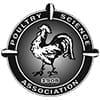Feeding live insect larvae to quail stimulates feeding behaviors - Interpretive Summary
Published: June 18, 2024
By: https://poultryscience.org/
by Lyndsey Johnston
Insects and derived products are possible alternative feedstuffs to improve the sustainability of the livestock sector due to several promising attributes such as limited space requirements for growing larvae, short productive cycles, limited water needs and the suitability of some species to mass rearing. Also, some insect species can contribute to circular economy models by upcycling organic side-streams from other industries into high-value nutrients for food-producing animals.
Most insects are considered to have high amounts of protein with excellent biological value, lipids, minerals, water-soluble vitamins, and compounds with functional properties such as chitin and antimicrobial peptides.
In the European Union, the current legislative framework allows eight insect species to be farmed to produce feed for food-producing animals and they can also be fed alive. The possible use of live insects as foodstuffs offers the potential for also using them as environmental enrichment, aiming at increasing the complexity of the captive environment.
A group of researchers at the University of Padova in Italy conducted a study to evaluate the effect of supplementing live Tenebrio molitor (TM; yellow mealworm) larvae to laying quails (Coturnix japonica) as a nutritional enrichment. Quail were chosen because it is a popular bird for egg production in Europe, and is economically interesting due to several positive attributes such as early sexual maturity, rapid growth, short generation interval, limited space requirements and high laying percentage.
Their findings, including live performance, apparent digestibility of nutrients, and egg traits, were recently published online here.
The study included two treatment groups: the first group received a control diet in mash form that was formulated based on the minimum requirements for laying Japanese quail, and a second group received the control diet along with a daily supplement of live TM larvae at 10% of expected daily feed intake. Quail were housed in battery cages and fed the experimental diets for 5 weeks with ad libitum access to feed and water.
For a separate in vivo digestibility trial, 30 quail were housed in digestibility cages and assigned to one of three treatments: (1) control, (2) control diet plus 10% live TM larvae and (3) a diet consisting of 100% live TM larvae to establish the nutritional value of the insect species.
The study confirmed the nutritional value of fresh TM larvae, which were rich in protein and fatty acids, resulting in a notable gross energy content. That said, the supplementation of 10% live TM larvae to the diet of laying quail did not alter the nutritive value of diets, but the nutritive value of 100% live TM larvae was lower than that of both control and 10% TM diets, due to the amount of chitin in the larvae that acts as an antinutritional factor.
Quail fed live TM larvae had similar performance as control birds during the five-week trial, except those fed 10% TM exhibited a significantly higher (P < 0.001) feed intake compared to controls. The researchers explained that the quails’ feeding stimulus of having the live larvae in the feeder was so strong that the larvae were consumed within 2 to 5 minutes after the larvae were provided each day.
Results from the physical egg trait evaluations determined that live TM larvae can be feed to laying quail as part of a standard diet without impairing egg quality. The egg physicochemical quality, sensory characteristics and shelf-life were in line with conventional eggs.
The researchers concluded that a 10% TM dietary supplementation is effective in stimulating feeding activity of quail, but the larvae did not provide any productive improvement compared to a standard diet.
The value of TM larvae as an enrichment tool for poultry should also be considered.
What does this mean for producers?
- Feeding insects to poultry provides a novel feed ingredient source that can contribute to the circular economy and enhance sustainability measures.
- Feeding live yellow mealworm larvae to quail helps stimulate feeding/foraging behaviors.
- Including up to 10% mealworm larvae in quail diets does not alter any performance attributes of laying quail or quality attributes of their eggs.
The full paper, “Live yellow mealworm (Tenebrio molitor) larvae: A promising nutritional enrichment for laying quails,” can be found in Poultry Science and online here.
DOI: 10.1016/j.psj.2024.103759
Source
https://poultryscience.org/Related topics:
Authors:

Recommend
Comment
Share

6 de septiembre de 2024
Thanks for sharing the findings about use of TM in quail diet. As it is mentioned that TM contributed to circular economy, how much was price difference per kg of diet among control, 10% and 100% larvae meal?
Recommend
Reply

Would you like to discuss another topic? Create a new post to engage with experts in the community.




